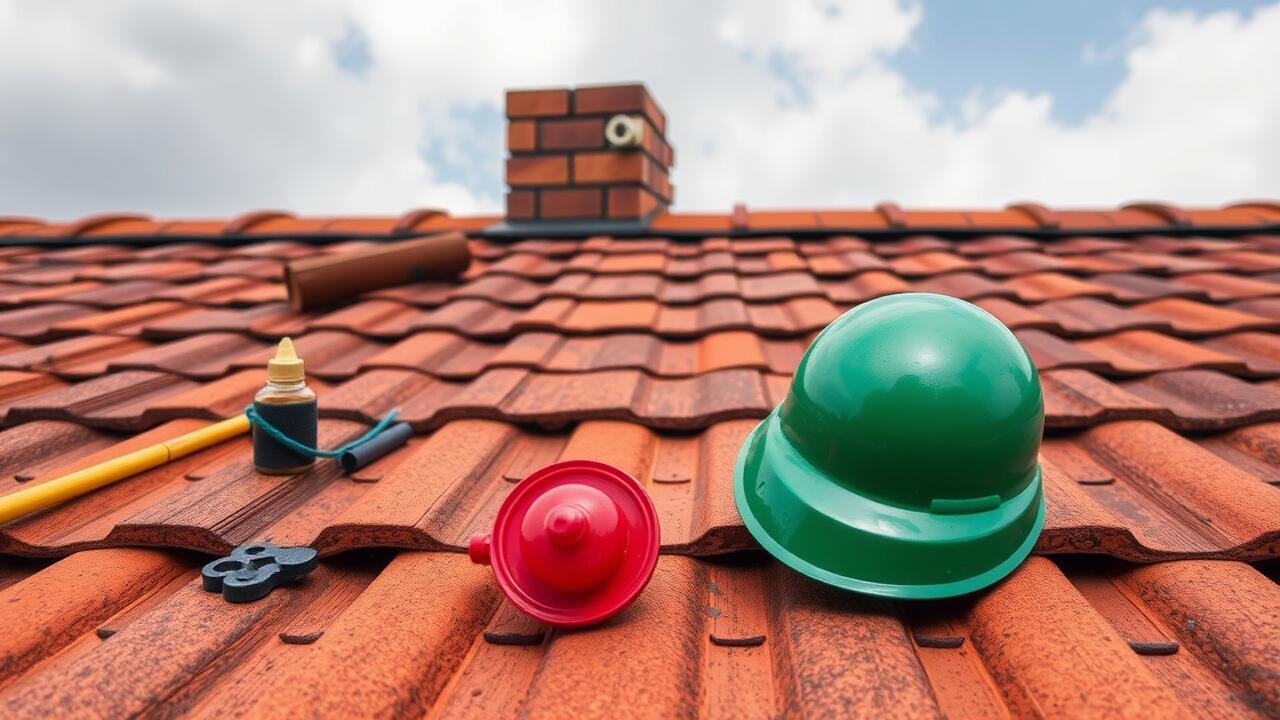Residential and Commercial Roofing San Diego
Signs Your Roof Needs Replacement
Homeowners, take heed! The condition of your roof demands a watchful eye—after all, myriad signs could scream for a replacement. Picture this: missing shingles or those pesky damaged ones glaring down at you. Not to mention the curling and buckling that seem to dance in defiance of their intended purpose! And what about those granules building up in your gutters? Oh yes, they’re not just there for decoration; they’re waving red flags of deterioration.
But wait, there’s more! Dive into the age factor—the silent teller of tales. Most roofing systems boast a lifespan that flits between 15 and 30 years, hinging on the materials woven into their very structure. As roofs age gracefully—or not so gracefully—they become vulnerable to structural woes and might falter in shielding you from Mother Nature’s whims.
And let’s talk aesthetics because who doesn’t love an attractive roof? If widespread wear is evident or if discoloration has taken hold like an unwelcome guest, or worse yet, moss starts its takeover… these are signals you simply cannot afford to overlook. Keep your eyes peeled; your roof may have stories it needs to share before it’s too late!
Identifying Key Indicators
Homeowners, take heed! Your roof—yes, that often-overlooked guardian overhead—demands your watchful eye. A myriad of clues lurks beneath the surface, whispering tales of impending replacement. Water stains creeping along ceilings or walls? That’s a red flag; leaks may be sneaking in from above. And what about those missing shingles or tiles? Each absence is a crucial warning sign, hinting at vulnerability up top.
But wait! Have you noticed an unsettling amount of granules collecting in your gutters or scattered on the ground? That could mean shingles are slowly succumbing to age and elements. Then there are those ominous large cracks or curling edges—a telltale sign that your roof’s integrity might be hanging by a thread.
Now, let’s talk about age—the roofing material’s lifespan can vary dramatically, typically spanning anywhere from 20 to 50 years based on how well it’s cared for and the whims of Mother Nature. So if yours is nearing its twilight years, it’s time for a closer inspection; don’t wait until it starts crumbling above your head!
And here’s another thing: if you’re noticing energy bills spiking unexpectedly like they’re trying to reach new heights themselves, it might just point to insulation or ventilation issues tied back to that very roof over you. Regular inspections aren’t merely recommended—they’re essential! Catch these problems early so you can navigate planning and budgeting with confidence when it comes to all things roofing-related.
The Roofing Installation Process
Before any roofing installation takes flight, a meticulous assessment unfurls—a dance of scrutiny and detail. Imagine surveying the weary roof’s condition, measuring its expanse like an artist evaluating a canvas, while keenly spotting challenges that lurk in the shadows of structure and environment alike. Planning? Absolutely pivotal! It’s like crafting a roadmap through potential pitfalls—an anticipation game ensuring every tool and material is poised for action before the first nail even strikes.
As this preparatory phase draws to a close, we dive headfirst into the installation itself. The old roofing materials are stripped away, much like shedding an outdated skin, revealing any hidden scars on the underlying structures that beg for repair. With everything solidified beneath us, new roofing materials are laid down with precision—their placement akin to piecing together a puzzle where each component must fit snugly and seal against nature’s whims.
And then come those final strokes: detailed inspections sweep across every inch as if examining fine art; clean-up follows suit, banishing debris from sight until only pristine surfaces remain. In this whirlwind of activity lies assurance—the new roof stands not just as shelter but also meets rigorous quality and safety standards.
Step-by-Step Overview
The roofing installation journey kicks off with a meticulous evaluation of the existing structure. A seasoned contractor dives deep into an exhaustive inspection, hunting for any lurking issues—perhaps a damaged decking or compromised insulation. This critical assessment paves the way for essential repairs to be executed before the shiny new roof makes its grand debut. Once they’ve pinpointed the ideal roofing material that balances quality and aesthetic appeal, it’s time to gather all necessary supplies.
With preparations wrapped up, we leap into the installation phase! The old roofing layer is gingerly stripped away, revealing what lies beneath—it’s like peeling back layers of history. Each inch of that underlying surface undergoes scrutiny for structural soundness. Any discrepancies? They’re swiftly addressed! Then comes the exhilarating moment when the brand-new roofing system takes shape, adhering strictly to manufacturer guidelines and local building codes—no cutting corners here!
This stage isn’t just about slapping on shingles; it involves laying down underlayment and flashing first, ensuring every detail’s covered like frosting on a cake. And let’s not forget ventilation systems—they’re woven in seamlessly to amp up energy efficiency, crafting a roof that’s not only robust but also remarkably functional.
| Installation Stage | Description | Key Considerations |
|---|---|---|
| Evaluation | Inspect the existing structure for damage and necessary repairs. | Identify issues such as damaged decking and insulation. |
| Preparation | Gather all required materials and tools for installation. | Choose roofing materials that balance quality with aesthetic appeal. |
| Stripping Old Roofing | Remove old roofing layers to expose the underlying structure. | Check for structural integrity; address any discrepancies found. |
| Installation | Install underlayment, flashing, and the new roofing system. | Follow manufacturer guidelines and local building codes precisely. |
| Ventilation | Incorporate ventilation systems to enhance energy efficiency. | Ensure proper airflow for a functional and durable roof. |
Local Roofing Regulations and Permits
Navigating the maze of local regulations is absolutely vital for any roofing endeavor in San Diego. The city imposes a set of specific codes—each one designed to uphold safety and preserve the structural integrity of your rooftop sanctuary. These rules can encompass everything from material specifications to demands on structural soundness, not to mention aesthetic alignment with the community’s vision and environmental ethos. Before you even think about raising a hammer or laying down shingles, diving into the San Diego Municipal Code alongside your local building department is non-negotiable; it’s where all relevant intel resides.
And let’s not forget permits—they’re usually par for the course, no matter how big or small your project may be. Obtaining that elusive permit isn’t just red tape; it stands as a guarantee that your work will meet those local standards and codes. Typically, this application journey requires detailed plans and insights into what materials are slated for use—a bit like presenting a blueprint for approval before painting your masterpiece! Keeping an open line of communication with local authorities? Absolutely essential—it helps clarify any stipulations that could throw off timelines or budgets like unexpected rain clouds on a sunny day. Roofing contractors often step in here as guides through this intricate process, ensuring every necessary permit is secured before work kicks off—thus dodging potential legal pitfalls lurking around every corner!
Compliance Requirements in San Diego
Diving into the labyrinthine world of roofing compliance in San Diego is not merely a task—it’s an odyssey for anyone embarking on construction or renovation. Homeowners and contractors alike must navigate through a maze of local building codes, each twist and turn centering around safety standards and the very essence of structural integrity. These regulations can be intricate, weaving together mandates on materials, energy efficiency metrics, and permits that demand attention long before any hammer strikes wood.
Engaging with the San Diego Planning Department becomes paramount; it’s like shining a light in the murky waters of specific regulations that govern both residential havens and commercial edifices.
Now let’s talk permits—the linchpin of this roofing saga. Securing these vital approvals does more than tick boxes on a checklist; it shields homeowners from potential pitfalls like fines or legal entanglements lurking just around the corner. Contractors need to don their regulatory hats, fully equipped with knowledge about local ordinances to streamline installation processes that could otherwise spiral into chaos! And let’s not forget inspections—they’re absolutely essential at various stages, ensuring everything aligns perfectly with both local guidelines and state mandates.
Neglecting these critical protocols? Well, that’s akin to opening Pandora’s box—resulting in hefty fines or dreaded retroactive modifications that no one wants to grapple with after-the-fact! So tread carefully; clarity amidst complexity is key in this ever-evolving landscape.
Eco-Friendly Roofing Solutions
Sustainable roofing options are really taking off, and it’s not hard to see why! With their eco-friendly perks and long-lasting cost benefits, they’re becoming the go-to choice for many. Imagine materials like metal, clay, or even recycled shingles—these aren’t just trendy; they can slash energy consumption while boosting insulation efficiency. Now picture this: green roofs adorned with lush vegetation—not only do they add a splash of beauty to urban landscapes, but they also work wonders for natural cooling and stormwater management. It’s a win-win! These vibrant solutions foster urban biodiversity and help combat that pesky heat island effect that plagues our crowded cities.
And then there’s the growing buzz around solar roofing systems—homeowners are diving into these as a savvy way to tap into renewable energy sources. Integrating solar panels right into the roof? Genius! They generate electricity while cutting down on fossil fuel dependence. Plus, let’s talk about manufacturers who are stepping up by offering eco-conscious materials designed for recycling at their end-of-life stage—a perfect fit for sustainability enthusiasts! Investing in these cutting-edge roofing choices doesn’t just mean lower energy bills; it could also boost property values sky-high—all while showcasing your dedication to caring for our planet.
Sustainable Options for Green Building
Integrating sustainable materials into roofing isn’t just a trend—it’s a game changer for our planet. Picture this: metal roofs, gleaming and resilient, not only offer high recyclability but also pack an energy-efficient punch that traditional shingles simply can’t match. Then there are green roofs, draped in lush vegetation—nature’s very own blanket! They provide remarkable insulation while soaking up rainwater like sponges. Talk about a win-win! These innovative solutions do more than save energy; they actively combat the oppressive heat of urban environments.
But wait, there’s more! Enter solar roofing systems—a brilliant choice that captures sunlight’s bounty to generate renewable energy right from your rooftop. Imagine slashing those utility bills while contributing to a cleaner future! And let’s not overlook cool roofs; these marvels reflect sunlight like champs and minimize heat absorption, leading to impressive reductions in cooling costs. Opting for these sustainable alternatives isn’t merely aligning with eco-conscious trends—it’s embracing a transformative movement toward responsible building practices that resonate with the pulse of today’s environmental ethos.
- Utilize recycled materials for roofing to reduce waste and lower carbon footprint.
- Incorporate high-performance insulation to enhance energy efficiency.
- Select EPD-certified products to ensure that materials meet environmental and health standards.
- Explore local sourcing options to minimize transportation emissions and support the local economy.
- Design for longevity and durability to decrease the frequency of replacements and renovations.
- Implement rainwater harvesting systems for irrigation and other non-potable uses to conserve water resources.
- Choose breathable roofing materials that contribute to healthier indoor air quality.
Selecting a Reliable Roofing Contractor
Selecting a qualified roofing contractor is no small feat—it’s a pivotal juncture that can make or break your entire roofing endeavor. Before you dive in, it’s crucial to check their licensing and insurance credentials like a detective on the case. A reputable contractor will readily present proof of liability insurance and worker’s compensation—this isn’t just paperwork; it’s your safety net, safeguarding both you and the crew laboring above your head.
Now, let’s talk reviews and references—they’re not merely nice-to-haves but essential breadcrumbs leading you through the forest of choices. Scour those client testimonials! Dig into past project photos like an art critic examining brush strokes for quality and reliability.
But wait! Communication is where things really start to sizzle. An adept contractor doesn’t just nod along; they actively listen to your desires while addressing any lingering concerns with finesse. That initial consultation? It’s practically an audition for how they manage projects and serve customers—with stars awarded for clarity!
And don’t stop there—gather multiple estimates! This gives you a kaleidoscopic view of market rates and guarantees that go beyond mere numbers on paper. Beware the temptation to chase after the lowest bid, as it may spell disaster for quality down the line. Ensure each contender hands over a detailed proposal that meticulously outlines materials required and timelines promised—because when it comes to roofing, precision counts!
Criteria for Making the Right Choice
Choosing a roofing contractor is no simple task; it demands a careful examination of their experience and standing in the local community. A contractor with an impressive track record not only signifies reliability but also showcases their knack for delivering top-notch workmanship that you can depend on. Dive into the realm of online reviews, tap into recommendations from past clients, and peruse through the contractor’s portfolio to gain valuable insight into their expertise—this exploration could illuminate what lies beneath the surface.
Equally important are credentials—you’ll want to verify licenses and insurance because these elements serve as shields against potential mishaps down the line. But wait! Cost estimates waltz right into this decision-making dance too. It’s wise to gather several quotes, allowing you to compare varying pricing structures and materials at play. Yet, beware: the lowest bid isn’t always synonymous with unbeatable value.
As you sift through proposals, take a moment to assess not just price tags but also scope of work, warranty options that might come your way, and timelines that chart your project’s course. This meticulous scrutiny will empower you to make a choice that’s informed—not merely instinctual—in selecting your roofing contractor!
Conclusion
A roof that’s in tip-top shape is absolutely crucial for shielding and prolonging the life of both homes and businesses alike. In sunny San Diego, it’s imperative for homeowners and business owners to make regular inspections and prompt repairs a top priority—after all, protecting your investment shouldn’t be left to chance! Being attuned to the subtle yet telling signs that scream “replace me!” can save you from spiraling repair costs while ensuring everyone inside stays safe and sound.
Now, teaming up with a trustworthy roofing contractor? That’s where the magic happens. Diving deep into research—digging through credentials, sifting through experience, scrutinizing past projects—can pave the way for smart choices. And let’s not forget about those trendy modern roofing options: going green isn’t just chic; it boosts property value while doing wonders for our planet too!
FAQS
How do I know if my roof needs replacement?
Ah, the telltale signs that your roof might be waving its white flag! Look out for missing or battered shingles, pesky water stains creeping across ceilings or walls, a disconcerting loss of granules scattered like fallen leaves, and let’s not forget—if your roof is strutting around at over 20-25 years old, it might just be time to consider an upgrade.
What does the roofing installation process involve?
The journey of installing a new roof is a multifaceted adventure! It usually kicks off with a meticulous inspection. Then comes the grand removal of aged roofing material—a bit like shedding old skin. Next up is prepping the roof deck to ensure it’s ready for action. After that, new roofing materials are laid down with care and precision. Finally, there’s a thorough inspection at the end of this saga to confirm everything meets quality standards and adheres to regulations.
Are there specific regulations or permits required for roofing in San Diego?
Indeed! In sunny San Diego, you’ll find that local building regulations lay down some ground rules—homeowners often need permits before diving into their roofing projects. This compliance dance ensures safety nets are in place while keeping quality on point!
What eco-friendly roofing options are available in San Diego?
If sustainability sings sweetly to your heart, you’re in luck! Eco-friendly choices abound—from sleek metal roofs and trendy cool roofs to innovative solar shingles—and let’s not overlook green roofing systems adorned with lush vegetation. Each option plays its part in promoting sustainability while boosting energy efficiency!
How can I choose a reliable roofing contractor in San Diego?
Selecting the right roofer can feel like finding gold among gravel! Focus on their experience—how long have they been honing their craft? Dig into customer reviews; what stories do past clients share? Check licenses and insurance because peace of mind matters immensely. Warranty offerings should also catch your eye! And don’t shy away from seeking referrals from trusted sources—they’re often golden nuggets leading you toward top-notch service!







